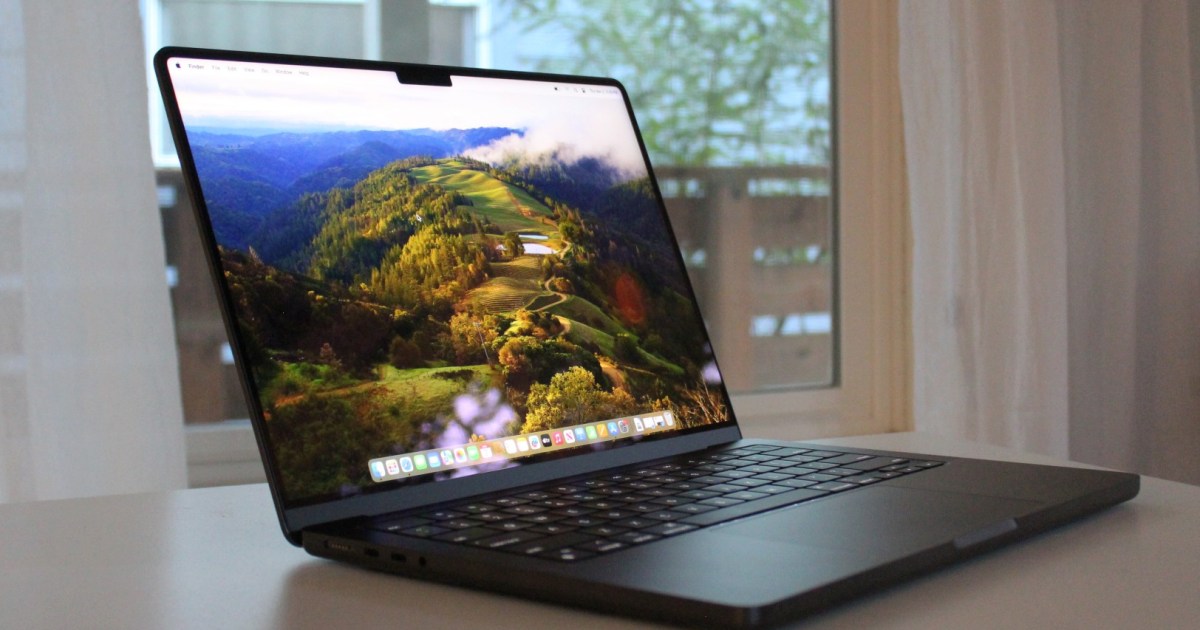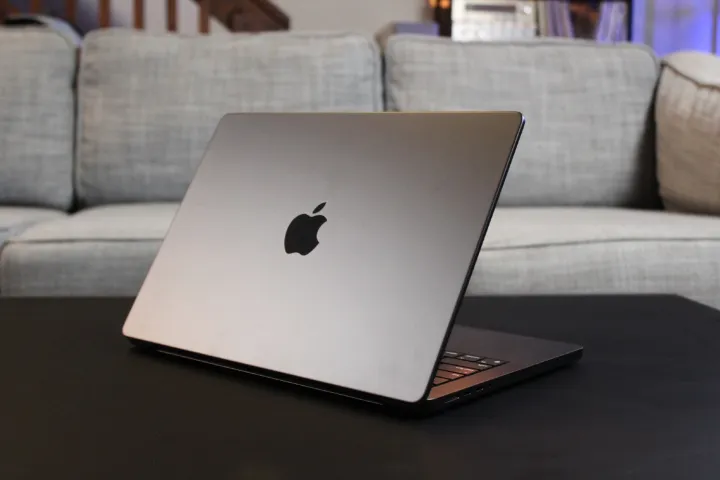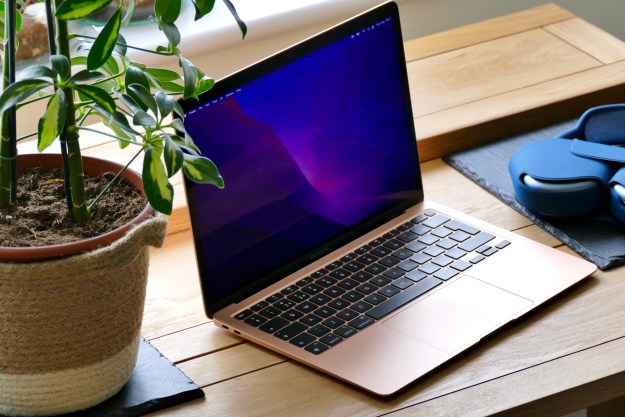Apple could fix the MacBook lineup with this one change
Apple’s MacBook range is looking pretty tasty with the arrival of the M3 generation of chips, but there’s one model that is holding everything else back.

By
Alex Blake
December 23, 2023 8:00AM 
 Luke Larsen / Digital Trends
Luke Larsen / Digital TrendsI was as surprised as anyone when Apple killed off the 13-inch MacBook Pro in October 2023, but at the time, it was definitely a pleasant revelation rather than a nasty shock. Now, though? There’s something I wish Apple had done differently.
Looking at Apple’s MacBook Pro lineup today, it’s almost perfect. How can Apple achieve that just-out-of-reach perfection? Maybe it should think about dropping the M3 MacBook Pro. I know, I know, it’s only just been released, but trust me — it needs to go.
In an awkward spot
 Luke Larsen / Digital Trends
Luke Larsen / Digital TrendsTo be sure, the 14-inch M3 MacBook Pro is a great departure from the old 13-inch model it replaced. Compared to its predecessor, it has a superior XDR display with thinner bezels and larger 14-inch dimensions. There are better speakers, more ports, and an end to the SSD throttling that so bedeviled the 13-inch MacBook Pro. In short, Apple fixed a bunch of problems.
So why am I saying Apple should drop a laptop that is so much better than what came before it? Well, while it may be pretty good right now, things could change rapidly — in just a couple of months, in fact, when the M3 MacBook Air comes out. When that happens, we’ll go right back to having a MacBook Pro that feels sorely out of place.
While killing off the 13-inch MacBook Pro made the lineup feel more “pro,” the M3 MacBook Pro that replaced it has its fair share of drawbacks. For one thing, you can only connect a single external display, while the entry-level model comes with just 8GB of memory. That would be bad enough given its $1,599 starting price, but Apple also charges an arm and a leg to upgrade the RAM. Calling a laptop a “Pro” device that only has 8GB of RAM and can only support one external monitor feels a bit misleading.
What’s more, the M3 MacBook Pro will only feel pro for a little while longer. That’s because an M3 MacBook Air is just months away, and once both the MacBook Pro and the cheaper MacBook Air come with the same chip, a lot of people are simply going to opt for the more affordable model.
Sure, the comparison between the M3 MacBook Pro and the M3 MacBook Air won’t be as stark as it was during the M2 generation when we recommended skipping the 13-inch MacBook Pro entirely and buying the MacBook Air instead. But the M3 MacBook Pro will certainly lose some of its luster regardless.
It shows Apple still hasn’t quite got the MacBook range right. The M3 MacBook Pro sits in an awkward spot between the MacBook Air on the one hand and the M3 Pro MacBook Pro on the other. Instead of trying to shoehorn a laptop into this gap, perhaps Apple should just drop it.
Where do we go from here?
 Luke Larsen / Digital Trends
Luke Larsen / Digital TrendsWith the latest 16-inch and 14-inch MacBook Pros, Apple has done a pretty good job of bringing back some much-needed differentiation to its MacBook roster. Now, if you want an affordable laptop with lots of great features, you get a MacBook Air. If you need high-end performance and an incredible display, you buy a MacBook Pro.
The pricing differences have helped to emphasize this: the MacBook Air starts at $1,099 for the latest model, while the MacBook Pro begins at $1,599. But I know that killing off the M3 MacBook Pro would make that distinction even clearer because right now, it sits uncomfortably close to the MacBook Air, with its 8GB of memory and entry-level M3 performance.
Removing it from the MacBook range would create clear dividing lines not just in terms of device monikers, but in the chips they use. It would mean the least powerful chip in the MacBook Pro would be the M3 Pro. In other words, pro chips for pro laptops. What’s clearer than that?
It would, of course, mean no $1,599 entry point into the MacBook Pro range – instead, you’d probably be looking at $1,999 for the cheapest MacBook Pro, which is what the M3 Pro models start at. That’s a lot, and I know plenty of people would balk at the cost.
But keeping it around only muddies the MacBook waters. The M3 MacBook Pro has its problems, and its presence will only feel weirder once the M3 MacBook Air launches. Maybe Apple should think about dropping it before things get even more confusing.
Editors' Recommendations
6 upcoming products that will make 2024 a huge year for Apple Everyone who should (and shouldn’t) buy the M3 MacBook Pro Apple has a chance to fix Mac gaming for good in 2024 How a MacBook Pro sneakily got me back into PC gaming Will the Vision Pro replace the Mac? Why Apple will have to tread carefullyIn ancient times, people like Alex would have been shunned for their nerdy ways and strange opinions on cheese. Today, he…
I’m finally ready to stop recommending Apple’s cheapest MacBook
Apple’s MacBook lineup is a bit all over the place at the moment. It’s full of fantastic machines that trounce the competition, yet picking the right Mac for you has never been more confusing. But amid all the uncertainty, one thing is for sure: I can finally stop recommending the M1 MacBook Air.
For years now, the M1 MacBook Air has been a great choice for anyone looking to dip their toes into the world of Apple laptops. But three years after its launch, it’s no longer looking like the solid purchase it used to be.
A strong debut
M1 MacBook Air Mark Coppock/Digital Trends / Digital Trends
I’m a laptop reviewer. Here’s why I still use a laptop from 2021
I'm pretty much always using a new laptop as my daily driver -- whichever one that I'm testing for review. And in 2023 alone, I've reviewed almost 40 machines, ranging from near-budget machines with solid performance and impressive features all the way up to innovative devices like the HP Spectre Foldable PC.
But occasionally, there's a lull in new releases, which gives me a chance to do a gut check. Which laptop do I return to as my primary work machine? To my own surprise, it's none of the flashy new releases from 2023. It's a laptop from way back in 2021 that remains my favorite. Not coincidentally, it's the only laptop I've purchased myself in years. That laptop is the first-gen Apple MacBook Pro 14, and it's held up so well against the competition that I still haven't felt compelled to replace it. Here's why.
The display continues to blow me away
The MacBook Pro we all want is still many years away
As great as the MacBook Pro is right now, there's one important feature that's always been missing. A touchscreen. It's something Windows laptops have enjoyed for years now, and many have viewed it as a missing piece of the puzzle for the Mac.
The latest rumors, however, suggest that a solid road map is in place that could potentially end with touch-enabled OLED screens coming to the MacBook Pro.
The news comes from @Tech_Reve on X (formerly Twitter), who indicates that Apple has plans to reveal MacBook Pro models featuring OLED displays in the 2026 to 2027 time frame. These models might come in 14.2-inch and 16.2-inch variants and are also expected to be touchscreen enabled.
After the introduction of the OLED touchscreen MacBook Pro, Apple is expected to push both features to MacBook Air models in 13.6-inch and 15.3-inch variants. This could happen starting in 2026 and beyond, depending on the tentative timeline of the MacBook Pro launch.
According to @Tech_Reve, Apple is working with Samsung and LG as its display suppliers. Each manufacturer has their own updated version of touchscreen technology that integrates the touch panel directly into the display. Samsung's technology is called Y-OCTA and LG's is Touch On Encapsulation. However, they ultimately produce the same result, a thinner panel at a lower cost. The current standard entails layering the OLED panel and then a separate touch panel, WCCFTech noted.
The OLED touchscreen MacBook Pro might trickle down from the OLED iPad Pro, which is one of the big Apple rumors for a launch during the first half of 2024. The tablet already has a touchscreen display, so many believe it would be an easy transition to add an OLED screen for a similarly high-end product. Additionally, the rumored 11-inch and 13-inch models are expected to be solid testers for future OLED touchscreen devices, such as the 2026-2027 MacBook Pro.
WCCFTech made the point that the OLED touchscreen MacBook Pro would likely require tweaks to the macOS interface to accommodate for the precision needed when using touch on a display. Notably, the iPad Pro already has the assistance of the Apple Pencil, but there's no telling how accessories will fit into the equation.

 Troov
Troov 




































